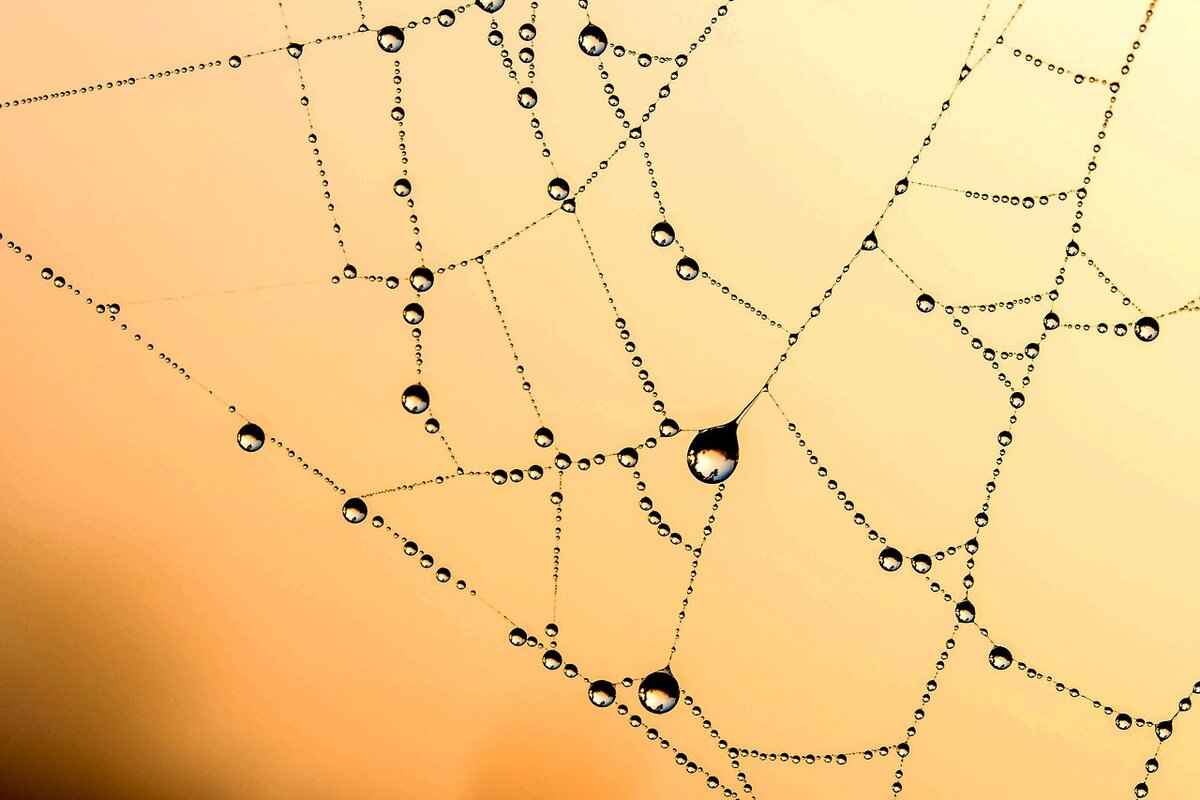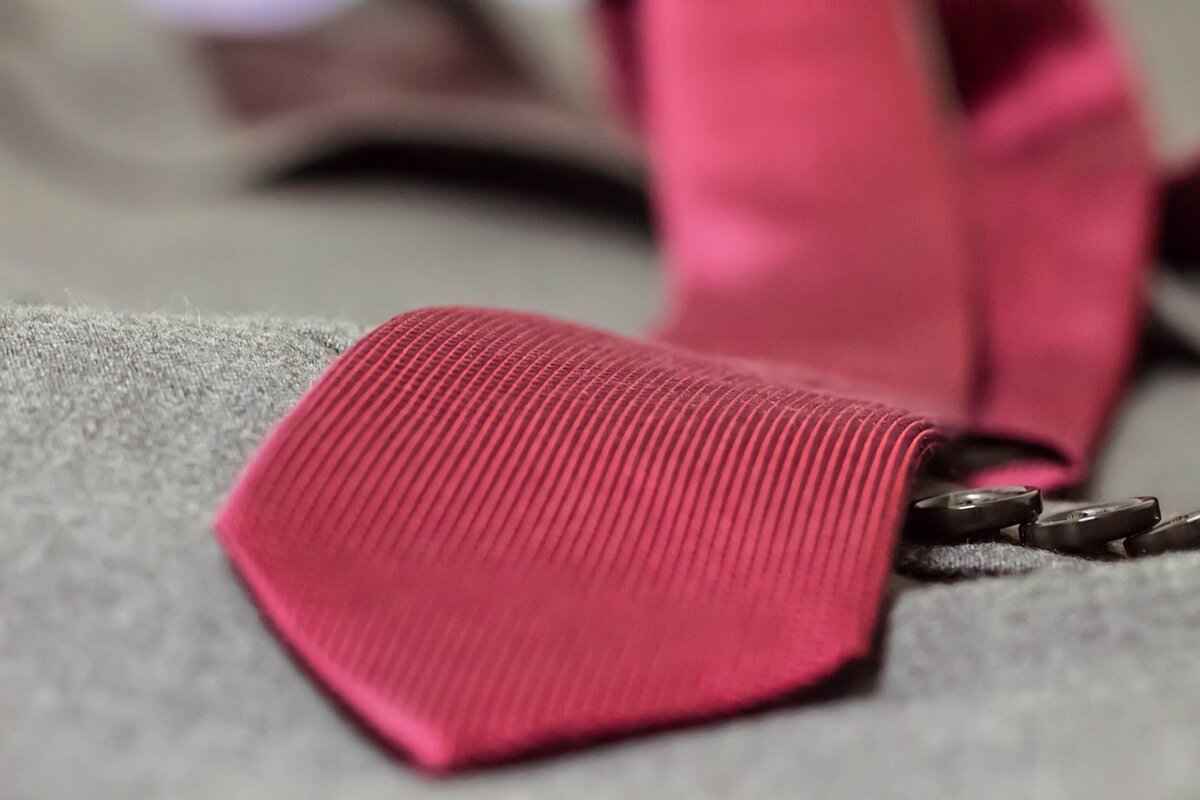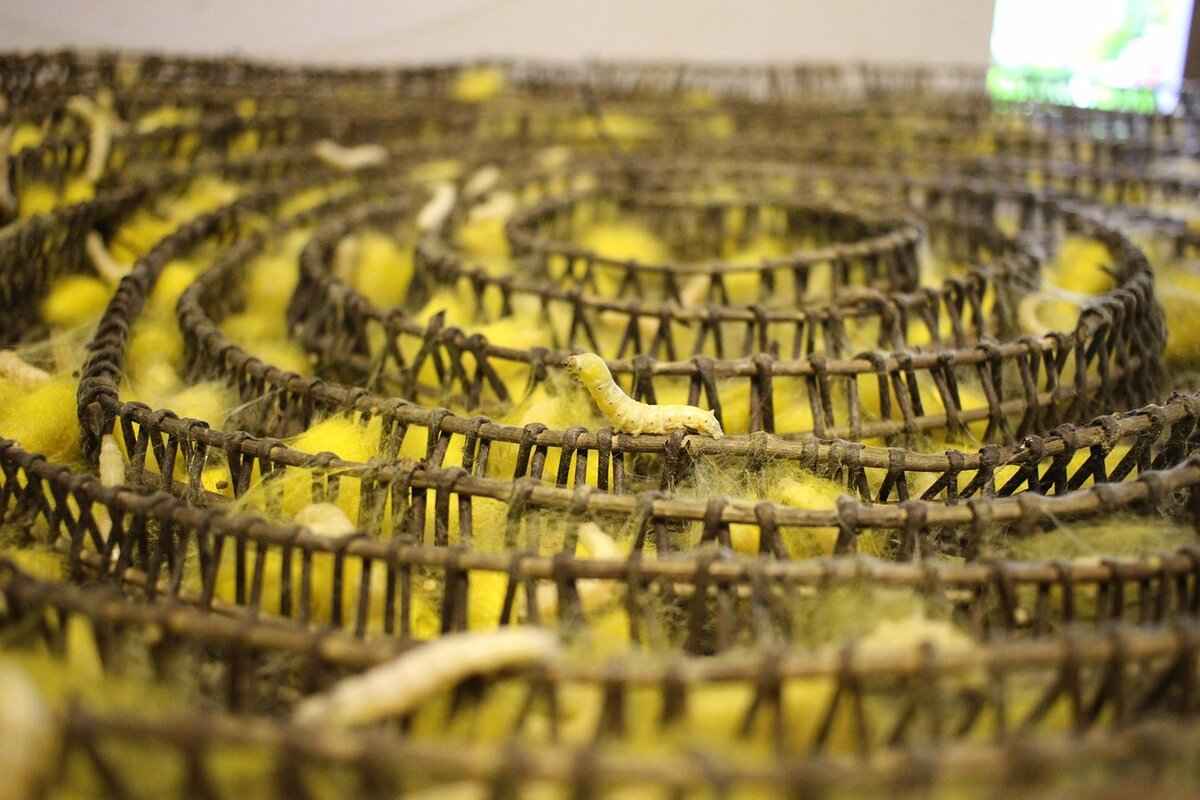This article provides a comprehensive guide on cleaning silk ties effectively while preserving their quality and appearance. Learn the best methods and tips to maintain your silk accessories.
Understanding Silk Fabric
Silk is a delicate and luxurious fabric that requires special care. Understanding its properties helps in choosing the right cleaning methods to avoid damage. Silk is known for its soft texture and shiny appearance, making it a popular choice for ties. However, its susceptibility to stains and color fading means that it needs to be handled with care. The natural fibers can absorb moisture and oils, which can lead to permanent stains if not treated promptly.
Common Stains on Silk Ties
Identifying common stains on silk ties is crucial for effective cleaning. Different stains require specific treatments to ensure the integrity of the fabric is maintained. Here are some of the most common offenders:
- Food and Beverage Stains: Spills from coffee, wine, or sauces are frequent culprits.
- Oil-Based Stains: These can be particularly stubborn and may require special cleaning agents.
- Ink and Sweat Stains: These can be challenging but can often be treated with the right approach.
Pre-Cleaning Preparations
Before cleaning your silk tie, certain preparations can help ensure the best results. Taking these steps minimizes the risk of damage during the cleaning process.
- Checking Care Labels: Always check the care label on your silk tie. It provides essential information on cleaning methods recommended by the manufacturer.
- Testing for Colorfastness: Before applying any cleaning solution, testing for colorfastness is crucial. This step ensures that the color of your tie will not bleed or fade during cleaning.
Hand Washing Silk Ties
Hand washing is often the safest method for cleaning silk ties. This section outlines the steps to effectively wash your tie without causing damage.
- Choosing the Right Detergent: Selecting a gentle detergent is key to preserving silk. Look for products specifically designed for delicate fabrics to ensure safety.
- Washing Techniques: Proper washing techniques can make a significant difference. Use lukewarm water and gently agitate the tie in a basin to avoid wringing or twisting, which can distort its shape.
Drying Silk Ties Safely
Drying silk ties requires special attention to prevent damage. Here are the best methods for drying without compromising the tie’s structure:
- Avoiding Direct Heat: Direct heat sources can ruin silk ties. Instead, lay the tie flat on a clean towel to air dry.
- Using a Towel for Absorption: Gently roll the tie in a towel to absorb excess moisture, minimizing the risk of fabric distortion.
Storing Silk Ties Properly
Proper storage is vital for maintaining the appearance of silk ties. Here are some best practices:
- Using Tie Cases or Rolls: Tie cases or rolls provide protection from dust and creasing. Store your ties in a cool, dry place to avoid damage.
- Hanging vs. Folding: Decide whether to hang or fold your ties. Hanging is often recommended to prevent creases, but if folding, ensure it’s done neatly to avoid permanent wrinkles.
Professional Cleaning Options
When in doubt, professional cleaning services can be a safe alternative for silk ties. It’s essential to identify quality cleaners that specialize in silk to ensure your tie is treated with the utmost care. Understanding the costs associated with professional cleaning can help you make an informed decision.
By following these guidelines, you can maintain the beauty and longevity of your silk accessories while ensuring they remain in pristine condition.

Understanding Silk Fabric
Silk is a delicate and luxurious fabric cherished for its unique properties and elegant appearance. It is produced by silkworms and is known for its soft texture, natural sheen, and breathability. Understanding the characteristics of silk is essential for anyone who owns silk garments or accessories, particularly when it comes to cleaning and maintenance.
- Softness and Texture: Silk is renowned for its smooth and soft feel against the skin. This luxurious texture is one of the reasons why silk is popular in high-end fashion and formal wear.
- Durability: Although silk appears fragile, it is surprisingly strong. When cared for properly, silk can last for many years, making it a worthwhile investment.
- Breathability: Silk is a natural fiber, allowing it to breathe. This property helps regulate body temperature, making silk garments comfortable to wear in various climates.
- Color Retention: Silk has an exceptional ability to hold dye, resulting in vibrant colors and intricate patterns. However, this also means that silk can be sensitive to certain cleaning methods that may cause colors to fade or bleed.
When it comes to cleaning silk, it is crucial to remember that this fabric requires special care. Regular washing methods, such as machine washing or harsh detergents, can lead to damage and wear. Instead, gentle cleaning techniques are recommended to preserve the integrity of the fabric.
Common Misconceptions
Many people believe that silk is too delicate to be cleaned at home. However, with the right knowledge and techniques, it is possible to maintain silk items effectively. For instance, hand washing with a gentle detergent specifically designed for silk can be a safe method of cleaning. Additionally, understanding the importance of pre-cleaning preparations, such as checking care labels and testing for colorfastness, can prevent potential mishaps.
Environmental Impact
Silk production is often considered more environmentally friendly compared to synthetic fabrics. The process of obtaining silk is less harmful to the environment, and silk is biodegradable. However, it is essential to choose silk products that are ethically sourced to ensure sustainability.
In conclusion, understanding the properties of silk is vital for its care and maintenance. By recognizing its unique characteristics and the importance of gentle cleaning methods, you can enjoy your silk garments and accessories for many years without compromising their beauty and quality.

Common Stains on Silk Ties
When it comes to maintaining the elegance of your silk ties, identifying common stains is a vital first step. Silk, known for its luxurious feel and vibrant colors, is particularly susceptible to staining, and the type of stain can significantly affect how you should treat it. Different stains require specific treatments to ensure the integrity of the fabric is maintained, preventing any long-term damage. Below, we explore some of the most common stains encountered on silk ties and the best practices for addressing them.
Food and beverage stains are among the most frequent issues faced by silk tie owners. Stains from sauces, coffee, or alcohol can quickly mar the beauty of your tie. Quick action is essential; the longer a stain sits, the harder it becomes to remove. For example, a coffee spill should be blotted immediately with a clean cloth to absorb excess liquid. Avoid rubbing, as this can spread the stain further. After blotting, use a mild soap solution to gently dab at the stain.
Red wine can leave unsightly marks on silk. If you spill red wine on your tie, act quickly! Blot the stain with a clean cloth to absorb as much liquid as possible. Then, sprinkle a little salt on the stain to absorb the wine. After a few minutes, brush off the salt and treat the area with a mixture of cold water and white vinegar. Always test this solution on a hidden area first to ensure it doesn’t affect the color.
Oil-based stains, such as those from salad dressings or greasy foods, can be particularly challenging on silk. These stains often require a different approach. Start by sprinkling a small amount of cornstarch or talcum powder on the stain to absorb the oil. Let it sit for about 15 minutes before gently brushing it off. If the stain persists, a specialized silk cleaner may be necessary. Always follow the manufacturer’s instructions when using any cleaning product.
Ink stains from pens can also be problematic. To tackle an ink stain, first, blot the area with a clean cloth to absorb any excess ink. Then, apply a small amount of rubbing alcohol to a cotton swab and gently dab at the stain. Be careful not to rub, as this can spread the ink further. For sweat stains, a mixture of cold water and a few drops of mild detergent can help. Dab the mixture onto the stain and rinse carefully.
Besides food and drink, other stains such as dirt or grass can also occur. Each type of stain has its own removal technique, so it’s important to identify the stain before attempting to clean it. For dirt stains, allow the mud to dry completely before gently brushing it off. For grass stains, a mixture of rubbing alcohol and water can be effective. Always remember to test any cleaning solution on an inconspicuous area first.
In conclusion, understanding how to identify and treat common stains on silk ties is essential for maintaining their beauty and longevity. By acting quickly and using the appropriate cleaning methods, you can keep your silk ties looking pristine for years to come.
Food and Beverage Stains
Food and beverage stains are among the most common challenges encountered by silk tie owners. These elegant accessories can easily fall victim to spills, making it crucial to act swiftly to prevent permanent damage. When it comes to silk, a delicate fabric known for its luxurious feel and appearance, understanding the nature of these stains is vital for effective cleaning.
- Types of Stains: Food and beverage stains can vary widely, including coffee, tea, red wine, and sauces. Each type of stain requires a tailored approach for removal.
- Immediate Action: The key to successful stain removal is quick action. As soon as a spill occurs, gently blot the area with a clean, dry cloth to absorb excess liquid without rubbing, which can spread the stain.
- Stain Treatment: Different stains necessitate specific treatments. For instance, a mixture of cold water and mild detergent can be effective for most food stains, while red wine may require a specialized stain remover designed for silk.
It is essential to remember that silk is sensitive to harsh chemicals and high temperatures. Using a gentle touch and appropriate cleaning agents is crucial. For stubborn stains, consider the following methods:
1. **Red Wine Stains**: - Blot immediately with a clean cloth. - Apply a mixture of cold water and a few drops of dish soap. - Rinse with cold water and blot dry.2. **Coffee Stains**: - Blot with cold water. - Use a mixture of white vinegar and water (1:1 ratio) to treat the stain. - Rinse and dry carefully.
3. **Oil-Based Stains**: - Sprinkle cornstarch or talcum powder to absorb the oil. - Let it sit for 15 minutes before brushing off. - Use a silk-safe cleaner for any remaining residue.
To enhance the effectiveness of your cleaning efforts, always test any cleaning solution on a small, inconspicuous area of the tie first. This precaution helps ensure that the color and texture of the silk remain intact.
In addition to immediate stain treatment, consider regular maintenance to keep your silk tie looking its best. This includes proper storage and occasional professional cleaning, especially for ties that are frequently worn or heavily soiled. By understanding the nature of food and beverage stains and employing the right cleaning techniques, you can extend the life and beauty of your silk ties.
In conclusion, being proactive and knowledgeable about stain removal can make a significant difference in preserving the elegance of your silk ties. Always remember that gentle handling and timely action are your best allies in maintaining these luxurious accessories.
Removing Red Wine Stains
from silk ties can be a daunting task, especially if you cherish the elegance and luxurious feel of silk. Red wine is notorious for leaving deep, unsightly marks that can seem impossible to remove. However, with the right techniques and prompt action, you can effectively treat these stains and preserve the beauty of your tie.
First and foremost, it is crucial to act quickly when you notice a red wine stain on your silk tie. The longer the stain sits, the more difficult it becomes to remove. Start by gently blotting the stained area with a clean, dry cloth or paper towel to absorb as much of the wine as possible. Avoid rubbing the stain, as this can push the wine deeper into the fibers of the silk.
Next, you can create a simple yet effective cleaning solution. Mix one part white vinegar with two parts cold water. This natural remedy is gentle on silk and can help neutralize the acidity of the red wine. Using a clean cloth, dab the solution onto the stain, working from the outside in to prevent spreading. Blot the area again with a dry cloth to lift the stain.
If the stain persists, consider using a mild detergent specifically formulated for silk. Dilute the detergent in cold water and repeat the dabbing process. Always test any cleaning solution on a hidden area of the tie first to ensure it does not cause discoloration.
After treating the stain, rinse the area with cold water to remove any remaining cleaning solution. Avoid wringing or twisting the fabric, as this can distort its shape. Instead, lay the tie flat on a clean towel and roll it gently to absorb excess moisture.
Once you have removed the stain, it is essential to let the tie air dry away from direct sunlight and heat sources. Hanging the tie can cause it to stretch, so it is best to lay it flat until completely dry.
In some cases, if the stain is particularly stubborn or the tie is an expensive piece, seeking professional cleaning services may be the best option. Dry cleaners with experience in handling silk can provide specialized care and ensure that your tie is cleaned without damage.
In summary, removing red wine stains from silk ties requires prompt action, gentle cleaning solutions, and careful drying techniques. By following these steps, you can restore your tie to its original beauty and continue to enjoy its luxurious feel.
Dealing with Oil-Based Stains
Oil-based stains can be particularly challenging to remove from silk ties, as they often penetrate deep into the fibers. Understanding the right cleaning agents to use is crucial for effectively removing these stains without harming the delicate fabric. This section provides a comprehensive guide on how to tackle oil-based stains on silk ties.
When faced with an oil-based stain, the first step is to act quickly. The longer the stain sits, the more difficult it becomes to remove. Begin by gently blotting the area with a clean, dry cloth to absorb as much of the oil as possible. Avoid rubbing, as this can spread the stain further and damage the silk.
Choosing the Right Cleaning Agent
- Use a solvent-based cleaner specifically designed for delicate fabrics. These cleaners are formulated to break down oil without harming the silk.
- Another option is to use a cornstarch or talcum powder paste. Apply it to the stained area and let it sit for several hours to absorb the oil.
- For stubborn stains, a mixture of dish soap and warm water can be effective. Ensure the soap is gentle and free from harsh chemicals.
Application Techniques
Once you have selected your cleaning agent, apply it carefully. If using a solvent-based cleaner, apply a small amount to a clean cloth and gently dab the stained area. For the cornstarch or talcum powder paste, apply it generously over the stain and allow it to sit for at least 30 minutes before gently brushing it off.
When using a dish soap solution, mix a few drops of soap with warm water. Dampen a cloth with this solution and gently blot the stain, working from the outside in to prevent spreading. Rinse the cloth with clean water and blot the area again to remove any soap residue.
Post-Cleaning Care
After treating the stain, it’s essential to rinse the area with cool water to remove any remaining cleaning agents. Gently blot the area with a dry cloth to absorb moisture. Avoid wringing or twisting the silk tie, as this can distort its shape.
Once the tie is clean, lay it flat to dry away from direct sunlight and heat sources. This prevents fading and maintains the integrity of the silk fibers.
When to Seek Professional Help
If the stain persists despite your best efforts, it may be time to consult a professional cleaner. Look for a cleaner that specializes in silk and delicate fabrics to ensure your tie receives the appropriate care. Professional cleaners have access to advanced products and techniques that can effectively remove stubborn oil-based stains without damaging the fabric.
In summary, dealing with oil-based stains on silk ties requires prompt action and the right cleaning methods. By using appropriate cleaning agents and techniques, you can effectively remove these stains while preserving the quality and appearance of your silk tie.
Other Common Stains
When it comes to maintaining the elegance of a silk tie, understanding the various types of stains that can occur is essential. While food and drink stains are often the most discussed, such as ink, sweat, and even cosmetic products can be equally problematic. Each type of stain necessitates a unique removal technique to ensure that your silk tie remains in pristine condition.
Ink stains can be particularly challenging to remove, especially from delicate silk fabric. The first step in addressing an ink stain is to act quickly. Do not rub the stain, as this can spread the ink further into the fibers. Instead, place a paper towel or a clean cloth under the stained area to absorb excess ink.
- Use a cotton swab or a soft cloth dipped in isopropyl alcohol.
- Gently dab the stained area, working from the outside in to prevent spreading.
- Rinse the area with cold water and blot dry with a clean towel.
If the stain persists, consider repeating the process or consulting a professional cleaner to avoid damaging the fabric.
Sweat can leave unsightly marks on silk ties, particularly in warmer weather. To tackle sweat stains, it is crucial to act promptly. Begin by rinsing the tie in cold water, which can help lift some of the sweat residue.
- Create a solution of mild detergent and cold water.
- Soak a clean cloth in the solution and gently dab the stained area.
- After treating the stain, rinse the tie thoroughly with cold water.
Dry the tie by laying it flat on a clean towel and avoiding direct sunlight or heat sources, as these can cause further damage to the silk.
Makeup products such as foundation, lipstick, or hair spray can also pose a threat to the integrity of your silk tie. The key to removing these stains is to identify the product type and act swiftly.
- For foundation stains, gently scrape off any excess with a dull knife.
- Use a cotton ball dipped in a mixture of water and mild detergent to dab at the stain.
- Rinse the area with cold water and blot dry.
For lipstick stains, a small amount of rubbing alcohol can be effective. Again, dab gently and rinse thoroughly.
Other stains, such as those from grass or mud, can also occur. To treat these, allow the stain to dry completely before attempting to remove it. Once dry, gently brush off any excess residue and follow similar steps as outlined for other stains, using a mild detergent solution.
In summary, while food and drink stains are often the focus, it’s vital to recognize that ink, sweat, and cosmetic stains also require specific attention. By following the appropriate removal techniques, you can maintain the beauty and longevity of your silk ties.

Pre-Cleaning Preparations
Cleaning a silk tie requires careful attention to detail, especially during the pre-cleaning phase. Proper preparations can significantly enhance the cleaning process and help in maintaining the tie’s quality. In this section, we will explore essential steps to take before embarking on the cleaning journey, ensuring that your silk tie remains in pristine condition.
One of the first steps in preparing to clean your silk tie is to check the care label. This label contains crucial information regarding the recommended cleaning methods and any specific precautions that should be taken. Manufacturers often provide guidelines tailored to the unique properties of their silk ties. Ignoring these instructions could lead to unintended damage, such as fading or fabric distortion.
Before applying any cleaning solution, it is vital to test for colorfastness. This simple test can prevent potential disasters during the cleaning process. To conduct a colorfastness test, dampen a small, inconspicuous area of the tie with water and apply a mild detergent. Blot the area with a white cloth and observe the results. If the color bleeds onto the cloth, it indicates that the dye used in the tie is not colorfast, and you should consider alternative cleaning methods.
Identifying the types of stains present on your silk tie is another critical step. Different stains, such as food, ink, or oil-based marks, require specific treatments. Take a moment to assess the severity of the stains. For example, fresh stains may respond well to gentle cleaning techniques, while older stains might require more intensive treatment. Understanding the nature of the stains will help you choose the most effective cleaning approach.
Before starting the cleaning process, gather all the necessary supplies. You will need:
- Gentle detergent specifically designed for silk or delicate fabrics
- Soft cloths or sponges for blotting
- Cold water for rinsing
- A clean towel for drying
Having these items on hand will streamline the cleaning process and reduce the risk of damage to your silk tie.
Consider your options for cleaning your silk tie. While hand washing is often the safest method, some ties may be suitable for dry cleaning. Review the care label to determine the best approach. If you choose to hand wash, remember to use cold water and a gentle detergent, and avoid wringing or twisting the fabric, as this can lead to distortion.
Finally, ensure that your workspace is clean and free from any potential hazards. Lay down a clean towel or cloth to protect the tie from any contaminants. A well-prepared environment minimizes the risk of transferring dirt or other substances onto the silk during the cleaning process.
By following these pre-cleaning preparations, you can significantly reduce the risk of damaging your silk tie. These steps not only help in achieving the best cleaning results but also extend the life of your cherished accessory.
Checking Care Labels
is a crucial step in maintaining the quality and longevity of your silk tie. Silk is a delicate fabric, and it requires specific care instructions to prevent damage. The care label, typically located on the back of the tie, provides essential information about cleaning methods, drying techniques, and other maintenance tips recommended by the manufacturer.
When you purchase a silk tie, the care label is your best friend. It often includes symbols that indicate how to wash, dry, or iron the tie safely. For instance, a symbol of a hand in water suggests that hand washing is preferred, while a crossed-out bucket indicates that the tie should not be washed in water at all. Understanding these symbols is vital for effective care.
- Hand Washing: If the care label allows for hand washing, use cold water and a gentle detergent specifically designed for silk. Avoid wringing or twisting the fabric, as this can cause distortions.
- Dry Cleaning: If the label recommends dry cleaning, it’s best to follow this guidance. Professional dry cleaners are equipped to handle silk and can remove stains without damaging the fabric.
- Ironing: Some care labels may suggest that the tie can be ironed on a low setting. If so, always place a cloth between the iron and the tie to protect it from direct heat.
Ignoring the care label can lead to irreversible damage, such as fading colors, shrinking, or even tearing. For example, using hot water or harsh detergents can strip the tie of its luster and ruin its texture. Therefore, always prioritize the manufacturer’s instructions, as they are designed to preserve the beauty of your silk tie.
In addition to the cleaning instructions, the care label may also provide tips on storing your tie. Proper storage is essential to avoid creases and maintain the tie’s shape. Some labels suggest rolling the tie instead of folding it, which can help prevent unwanted wrinkles.
Furthermore, if you are unsure about the care instructions or if the label is missing, consider consulting with a professional cleaner who specializes in silk. They can offer advice tailored to your specific tie and may provide additional insights on how to treat stains or maintain its appearance over time.
In conclusion, always check the care label on your silk tie before attempting any cleaning or maintenance. This small step can save you from costly mistakes and help you enjoy your luxurious accessory for years to come.
Testing for Colorfastness
When it comes to cleaning silk ties, one of the most important steps is . This crucial process helps ensure that the color of your tie will not bleed or fade during cleaning. Silk, being a delicate and luxurious fabric, can react unpredictably to various cleaning agents. Therefore, taking the time to conduct a colorfastness test can save you from potential disappointment and damage.
To perform a colorfastness test, you will need a small, inconspicuous area of the tie, such as the underside or a corner. Begin by dampening a cotton swab or a clean white cloth with the cleaning solution you intend to use. Gently dab the swab or cloth on the selected area. It is essential to avoid soaking the fabric, as excessive moisture can lead to further issues.
After applying the cleaning solution, observe the area for any signs of color transfer. If the color begins to bleed onto the cotton swab or cloth, it indicates that the dye is not stable, and you should avoid using that particular cleaning solution. In such cases, consider opting for a milder detergent or a solution specifically designed for silk.
Additionally, it is advisable to allow the tested area to dry completely before making any further decisions. This will give you a clearer indication of how the color will hold up once the fabric is fully dry. If you notice any fading or discoloration, it is a clear sign that the tie is not colorfast and requires special handling.
Understanding the significance of colorfastness is not just about preserving your tie’s appearance; it is also about maintaining its value. Silk ties can be a significant investment, and ensuring that they remain in pristine condition is essential. If you are ever in doubt, consulting the care label or seeking professional cleaning advice is always a wise choice.
In summary, testing for colorfastness is a simple yet vital step in the cleaning process of silk ties. By taking this precaution, you can ensure that your tie retains its original beauty and elegance, allowing you to enjoy it for years to come.

Hand Washing Silk Ties
When it comes to caring for your silk ties, hand washing is often the safest and most effective method. Silk is a delicate fabric that can easily be damaged by harsh chemicals or aggressive washing techniques. In this section, we will explore the essential steps to wash your silk tie by hand, ensuring that it remains in pristine condition.
Before you begin the hand washing process, it is crucial to gather all the necessary supplies:
- Gentle detergent: Choose a detergent that is specifically designed for delicate fabrics, such as silk or wool.
- Warm water: Fill a basin or sink with lukewarm water, as hot water can cause silk to shrink or lose its shape.
- Towel: Have a clean, dry towel on hand to absorb excess moisture after washing.
Follow these steps to ensure a thorough yet gentle cleaning of your silk tie:
- Prepare the water: Dissolve a small amount of gentle detergent in the lukewarm water, mixing it well to create a soapy solution.
- Submerge the tie: Carefully place your silk tie into the water, allowing it to soak for a few minutes. Avoid agitating the water too much, as this can cause the fabric to fray.
- Gently clean: Using your fingers, gently press the tie in the soapy water, focusing on any stained areas. Do not rub or scrub the fabric, as this can lead to damage.
- Rinse thoroughly: After cleaning, remove the tie from the soapy water and rinse it under cool running water until all detergent is washed away. Ensure that no soap residue remains, as this can cause discoloration.
After washing, how you dry your silk tie is just as important:
- Do not wring: Never twist or wring out your silk tie to remove excess water, as this can distort its shape.
- Use a towel: Instead, lay the tie flat on a clean towel and gently press to absorb moisture. You can roll the towel with the tie inside to help draw out more water.
- Air dry: Hang the tie in a shaded area away from direct sunlight or heat sources, which can cause fading and damage.
To maintain the quality of your silk ties, consider the following:
- Frequency of washing: Only wash your tie when necessary, as frequent washing can lead to wear and tear.
- Spot cleaning: For minor stains, consider spot cleaning with a damp cloth and a small amount of detergent instead of a full wash.
- Professional cleaning: If your silk tie is heavily soiled or has stubborn stains, it may be best to seek professional cleaning services that specialize in delicate fabrics.
By following these careful steps, you can effectively hand wash your silk ties while preserving their beauty and longevity. Remember, proper care will keep your silk accessories looking elegant for years to come.
Choosing the Right Detergent
When it comes to caring for your silk ties, selecting the right detergent is absolutely essential. Silk is a luxurious and delicate fabric that requires special attention during the cleaning process. Using the wrong detergent can lead to irreversible damage, fading, or even the deterioration of the fibers. Therefore, it is crucial to understand what to look for when choosing a detergent for your silk accessories.
Silk ties should be treated with the utmost care. This means opting for gentle detergents that are specifically formulated for delicate fabrics. Regular laundry detergents often contain harsh chemicals and enzymes that can break down silk fibers, leading to a loss of luster and strength. Instead, look for products that are labeled as “silk-safe” or “delicate fabric detergents.”
- Natural Ingredients: Choose detergents with natural or plant-based ingredients, as these are less likely to irritate the fabric.
- pH-Neutral Formulas: A pH-neutral detergent helps maintain the natural balance of silk, preventing damage.
- Fragrance-Free Options: Fragrances can sometimes cause discoloration or irritation, so opting for fragrance-free detergents is advisable.
There are several types of detergents that are suitable for silk ties:
1. **Liquid Detergents**: Easier to dissolve and less likely to leave residues.2. **Specialty Silk Detergents**: Formulated specifically for silk, ensuring maximum protection.3. **Wool Wash**: Often safe for silk as well, but check the label to confirm.
Before using any new detergent on your silk tie, it’s wise to conduct a patch test. Here’s how:
- Apply a small amount of the detergent to an inconspicuous area of the tie.
- Gently rub the area with a soft cloth.
- Rinse with cold water and let it dry completely.
- Check for any discoloration or damage.
Choosing the right detergent for your silk ties is a crucial step in maintaining their beauty and longevity. By selecting gentle, silk-safe products and performing patch tests, you can ensure that your ties remain in excellent condition for years to come. Remember, the right care can make all the difference in preserving the luxurious appeal of your silk accessories.
Washing Techniques
When it comes to maintaining the elegance of your silk tie, employing the right washing techniques is crucial. Silk is a delicate fabric that can easily be damaged if not handled properly. Below are some best practices for hand washing silk ties that will help you keep them looking pristine.
- Gather Your Supplies: Before starting, ensure you have all necessary items: a clean basin, cool water, a gentle silk-friendly detergent, and a soft towel.
- Prepare the Water: Fill a basin with lukewarm water. Avoid hot water as it can cause the silk fibers to break down and lose their luster.
- Add Detergent: Use a small amount of a mild detergent designed for silk or delicate fabrics. It is essential to follow the instructions on the detergent label to avoid using too much, which can leave residues on the fabric.
- Submerge the Tie: Gently place your silk tie into the water, allowing it to soak for a few minutes. Do not agitate or wring the tie, as this can distort its shape and damage the fibers.
- Gentle Cleaning: After soaking, use your fingers to lightly press the fabric, focusing on any stained areas. Remember to be gentle; silk is sensitive and can easily be damaged by rough handling.
- Rinse Thoroughly: Once you’ve cleaned the tie, carefully rinse it under cool running water. Ensure all detergent is washed away, as any residue can cause discoloration over time.
- Drying the Tie: Avoid wringing or twisting the tie to remove excess water. Instead, lay it flat on a clean, dry towel, roll the towel up gently, and press to absorb moisture. Then, lay the tie flat on a dry surface away from direct sunlight to air dry.
Additional Tips:
1. Always test for colorfastness before washing by dabbing a small, inconspicuous area with water and detergent.2. If your tie has stubborn stains, consider spot cleaning with a soft cloth before washing.3. Avoid using bleach or harsh chemicals, as these can irreparably damage silk.
By following these washing techniques, you can effectively clean your silk ties while preserving their beauty and longevity. Remember, the key to maintaining silk is to treat it with care and respect, ensuring it remains a cherished part of your wardrobe for years to come.

Drying Silk Ties Safely
When it comes to maintaining the exquisite quality of silk ties, drying is a crucial step that requires careful attention. Silk is a delicate fabric that can easily lose its shape or suffer from damage if not dried properly. This section provides a comprehensive overview of the best methods for drying silk ties, ensuring their structure and appearance remain intact.
One of the most important rules in drying silk ties is to avoid direct heat. High temperatures from hair dryers, radiators, or direct sunlight can cause the silk fibers to weaken and even melt. Instead, allow your tie to air dry naturally. Find a well-ventilated area away from direct sunlight to hang your tie. This method not only protects the fabric but also helps maintain its original shape.
Another effective technique for drying silk ties is to use a clean, dry towel. After washing your tie, gently lay it flat on a towel, then roll the towel with the tie inside to absorb excess moisture. This method minimizes the risk of fabric distortion while ensuring that the tie dries evenly. Avoid wringing or twisting the tie, as this can lead to creases and damage.
When hanging your silk tie to dry, consider using a tie rack or a hanger. Ensure that the tie is hung straight to prevent any unwanted folds or creases. If you don’t have a tie rack, you can also use a padded hanger, which provides gentle support and helps maintain the tie’s structure. Remember to hang the tie by the narrow end, allowing the wider end to drape freely.
Silk ties generally take longer to dry than synthetic fabrics. Depending on humidity and airflow, it may take several hours for your tie to dry completely. Be patient and check periodically to ensure it is drying evenly. Rushing the process by applying heat can lead to irreversible damage.
Once your silk tie is dry, proper storage is essential to maintain its condition. Avoid folding the tie immediately after drying, as this can create creases. Instead, hang it up or roll it gently in a tie roll or case. This way, you can keep your tie looking fresh and ready for your next occasion.
In summary, drying silk ties requires careful attention to detail. By avoiding direct heat, using towels for absorption, implementing proper hanging techniques, allowing ample drying time, and storing the ties correctly, you can preserve the quality and longevity of your silk accessories. Following these methods will ensure that your silk ties remain a staple in your wardrobe for years to come.
Avoiding Direct Heat
When it comes to caring for your silk ties, one of the most critical aspects is understanding how to properly air dry them. Silk is a delicate fabric that can easily be damaged by direct heat sources, which can lead to irreversible harm. Here, we will explore the reasons why avoiding direct heat is essential and how to effectively air dry your silk ties to maintain their quality and appearance.
Silk ties are prized for their luxurious feel and elegant appearance, but they require special care to preserve their beauty. One of the most damaging actions you can take is exposing your silk tie to direct heat. This includes heat from hair dryers, radiators, or even sunlight. Heat can cause the fibers in silk to weaken, leading to shrinkage, warping, or even color fading.
When silk is subjected to high temperatures, it can lose its natural sheen and luster. The protein structure of silk is sensitive, and high heat can break down these proteins, resulting in a tie that looks dull and worn out. Additionally, direct heat can cause the fabric to become brittle, making it more susceptible to tears and fraying.
To effectively air dry your silk tie, follow these essential steps:
- Step 1: Pat Dry – After washing your tie, gently pat it with a clean, soft towel to remove excess moisture. Avoid wringing or twisting the fabric, as this can distort its shape.
- Step 2: Lay Flat – Place the tie flat on a dry towel in a well-ventilated area. Ensure that the tie is not exposed to direct sunlight or heat sources. This helps to maintain its shape and prevents any potential damage.
- Step 3: Reshape the Tie – While the tie is still damp, gently reshape it to its original form. This is important to prevent creasing or curling as it dries.
- Step 4: Flip it Over – After a while, flip the tie over to ensure even drying on both sides. This will help maintain its quality and prevent any moisture from being trapped.
Air drying is not just about avoiding direct heat; it is also about preserving the integrity of the silk fabric. When you air dry your tie, you allow it to dry slowly and evenly, which helps to maintain its original texture and color. This method minimizes the risk of damage and ensures that your tie remains in excellent condition for years to come.
Moreover, air drying is an environmentally friendly option compared to using a dryer, which consumes energy and can be harmful to delicate fabrics. By adopting air drying techniques, you not only extend the life of your silk ties but also contribute to a more sustainable lifestyle.
In conclusion, understanding the importance of avoiding direct heat sources when drying your silk ties is crucial for maintaining their quality. By following the proper air drying techniques outlined above, you can ensure that your silk accessories remain beautiful and durable. Remember, a little extra care goes a long way in preserving the elegance of your silk ties!
Using a Towel for Absorption
When it comes to drying silk ties, the method you choose can significantly affect the fabric’s integrity. One highly effective technique is using a towel to absorb excess moisture. This approach not only expedites the drying process but also minimizes the risk of fabric distortion, which is crucial for maintaining the luxurious feel and appearance of silk.
Silk is a delicate fabric that can easily be damaged if not handled properly. After washing your silk tie, it’s vital to remove as much moisture as possible without subjecting it to harsh drying methods. Here’s how using a towel can be beneficial:
- Gentle Absorption: A soft, absorbent towel can gently blot the tie, soaking up moisture without causing friction that could lead to stretching or distortion.
- Prevention of Water Spots: By using a towel promptly after washing, you can prevent water spots from forming, which can mar the appearance of the tie.
- Controlled Drying: This method allows for a more controlled drying process, reducing the risk of damage from direct heat sources such as hair dryers or radiators.
To effectively use a towel for absorbing moisture, follow these steps:
- Choose the Right Towel: Opt for a clean, soft cotton or microfiber towel that won’t scratch the silk.
- Blot, Don’t Rub: Lay the tie flat on the towel and gently blot it. Avoid rubbing, as this can cause the fabric to lose its shape.
- Repeat as Necessary: If the towel becomes saturated, use a dry section or a new towel to continue absorbing moisture.
After the initial absorption, allow the tie to air dry in a cool, shaded area. Avoid hanging it up immediately, as this can lead to stretching. Instead, lay it flat on a clean, dry towel to finish the drying process. This method ensures that your silk tie retains its elegant drape and structure.
In conclusion, using a towel to absorb excess moisture is a simple yet effective technique for drying silk ties. By following these guidelines, you can ensure that your ties remain in pristine condition, ready to complement your outfits beautifully.

Storing Silk Ties Properly
Proper storage is essential for maintaining the appearance and longevity of your silk ties. Silk is a delicate fabric that can easily be damaged if not stored correctly. In this section, we will explore the best practices for storing your silk ties to keep them in excellent condition.
- Understanding the Importance of Storage: Silk ties are an investment and deserve the best care. Proper storage prevents creasing, fading, and other forms of damage that can diminish their beauty.
- Using Tie Cases or Rolls: One of the most effective methods for storing silk ties is to use tie cases or rolls. These accessories provide protection from dust and help maintain the tie’s shape. When choosing a tie case, opt for one that is padded and lined with a soft material to prevent friction. Rolls are also advantageous as they allow ties to be stored compactly without folding.
- Hanging vs. Folding: Deciding whether to hang or fold your ties can significantly impact their longevity. Hanging ties can prevent creases, but be cautious of using hangers that can stretch the fabric. A padded hanger is ideal for this purpose. On the other hand, if you choose to fold your ties, ensure that they are rolled loosely and stored in a drawer or on a shelf to avoid sharp creases.
Tips for Optimal Tie Storage
- Keep Away from Direct Sunlight: Exposure to sunlight can cause the colors of silk ties to fade. Store your ties in a cool, dark place to maintain their vibrancy.
- Maintain a Clean Environment: Ensure that the storage area is clean and free from dust. This will prevent any particles from settling on your ties and causing damage over time.
- Regularly Rotate Your Ties: If you own multiple silk ties, consider rotating them regularly. This practice not only gives each tie a chance to rest but also helps in maintaining their shape and appearance.
In summary, proper storage is vital for preserving the quality and appearance of silk ties. By using tie cases or rolls, deciding between hanging and folding, and following additional storage tips, you can ensure that your silk ties remain in excellent condition for years to come.
Using Tie Cases or Rolls
When it comes to maintaining the elegance of your silk ties, proper storage is essential. One effective method is utilizing tie cases or rolls, which are specifically designed to protect these delicate accessories from dust, creasing, and other potential damage. In this section, we will explore the benefits of using tie cases or rolls, as well as practical tips for storing your silk ties effectively.
Silk ties are not only a fashion statement but also an investment in your wardrobe. Therefore, it’s crucial to keep them in pristine condition. Here are some compelling reasons to consider using tie cases or rolls:
- Protection from Dust: Tie cases shield your ties from dust accumulation, which can dull their vibrant colors over time.
- Prevention of Creasing: Rolls allow ties to be stored rolled up, preventing unsightly creases that can occur when ties are folded or crammed into a drawer.
- Easy Organization: Tie cases and rolls often come with compartments or designated spaces, making it easier to organize your collection and find the tie you need quickly.
- Travel-Friendly: Many tie rolls are compact and portable, making them ideal for travel. They protect your ties during transit, ensuring they arrive at your destination wrinkle-free.
Storing your silk ties properly is crucial for prolonging their life. Here are some tips to ensure your ties remain in excellent condition:
- Choose the Right Case or Roll: Look for cases or rolls made from breathable materials. Avoid plastic, as it can trap moisture and lead to mildew.
- Keep Ties Rolled: When using a tie roll, roll each tie loosely to avoid putting pressure on the fabric. This method helps maintain the tie’s shape.
- Avoid Overcrowding: Ensure that your ties have enough space in the case or roll. Overcrowding can cause friction, leading to wear and tear.
- Store in a Cool, Dry Place: Keep your tie case or roll in a cool, dry area away from direct sunlight. This prevents fading and maintains the integrity of the silk.
Both tie cases and rolls have their unique advantages. Here’s a quick comparison to help you decide which option is best for you:
| Feature | Tie Cases | Tie Rolls |
|---|---|---|
| Protection Level | High | Moderate |
| Portability | Less portable | Highly portable |
| Storage Capacity | More ties | Fewer ties |
| Ease of Access | Moderate | Easy |
In summary, using tie cases or rolls is a smart strategy for maintaining the quality and longevity of your silk ties. By providing adequate protection from dust and creasing, these storage solutions help ensure that your ties remain in excellent condition for years to come. Take the time to choose the right storage method that suits your needs, and enjoy the elegance of your silk ties without worry.
Hanging vs. Folding
Hanging vs. Folding: Which is Better for Your Ties?When it comes to maintaining the quality and longevity of your silk ties, the method of storage plays a crucial role. Many tie owners find themselves debating whether to hang or fold their ties. Each approach has its own set of advantages and disadvantages, and understanding these can guide you in making the right choice for your collection.
Hanging Ties: Pros and ConsHanging ties is a popular method among many individuals who want to keep their ties wrinkle-free. Here are some key points to consider:
- Advantages:
- Prevents Creasing: Hanging ties can help maintain their shape and prevent unsightly creases that may occur when folded.
- Easy Access: Hanging ties allows for easy visibility and access, making it simple to choose the right tie for any occasion.
- Air Circulation: Hanging ties can benefit from better air circulation, which can help reduce odors and keep them fresh.
- Disadvantages:
- Space Requirements: Hanging may require more space, especially if you have a large collection of ties.
- Potential for Damage: If not hung properly, ties can become tangled or snagged, leading to potential fabric damage.
Folding Ties: Pros and ConsFolding ties is another common practice, particularly for those who travel frequently or have limited storage space. Here’s what to keep in mind:
- Advantages:
- Space-Saving: Folding ties allows for compact storage, making it ideal for smaller closets or travel bags.
- Less Risk of Snagging: When folded correctly, ties are less likely to snag compared to hanging methods.
- Disadvantages:
- Creasing: Folding can lead to creases that may be difficult to remove, especially on delicate silk fabric.
- Limited Visibility: Folded ties can be harder to see at a glance, making it more challenging to choose the right one quickly.
Making the Right ChoiceUltimately, the decision to hang or fold your ties depends on your personal preferences and lifestyle. If you prioritize easy access and wrinkle prevention, hanging may be the way to go. However, if space is a concern or you travel often, folding might be more practical.
Consider using a combination of both methods to maximize the benefits. For instance, you could hang your most frequently worn ties while folding others that you wear less often. Regardless of the method you choose, always ensure that your ties are stored in a cool, dry place to maintain their quality.
In conclusion, whether you decide to hang or fold your ties, being mindful of the storage method can significantly impact their longevity. Both methods have their unique advantages, and understanding these can help you keep your silk ties in pristine condition for years to come.

Professional Cleaning Options
When it comes to maintaining the elegance and quality of your silk ties, there are moments when opting for professional cleaning services is not just a choice, but a necessity. Silk is a luxurious fabric that can easily be damaged if not cared for properly. This section delves into the circumstances under which you should consider seeking professional help for cleaning your silk ties.
- Severe Stains: If your silk tie has encountered a significant stain, such as red wine or ink, it may be best to consult a professional cleaner. These stains can be challenging to remove without the right techniques and products, and attempting to clean them yourself could result in further damage.
- Color Bleeding: Should you notice any color bleeding or fading, a professional cleaner can assess the fabric and apply appropriate treatments to restore its original beauty. Their expertise in handling delicate fabrics ensures that the colors remain vibrant.
- Time Constraints: If your schedule is tight and you lack the time to dedicate to the careful cleaning process that silk requires, professional services can save you time and effort. They have the necessary equipment and expertise to handle the task efficiently.
- Preserving Quality: For high-value silk ties, such as those made by luxury brands, investing in professional cleaning can be wise. These specialists understand the nuances of silk care and will use methods that preserve the quality and longevity of your tie.
Identifying Quality Cleaners
Choosing the right professional cleaner is crucial for ensuring the best care for your silk ties. Not all dry cleaners have the same level of expertise with delicate fabrics. Here are some tips for identifying quality cleaners:
- Specialization: Look for cleaners that specialize in silk and other delicate fabrics. They will have the right knowledge and equipment to handle your tie safely.
- Reputation: Research customer reviews and ratings. A cleaner with a good reputation is more likely to provide satisfactory service.
- Certifications: Check if the cleaner has any certifications or affiliations with professional cleaning organizations, indicating a commitment to quality.
Understanding Costs and Services
Professional cleaning services can vary significantly in price, depending on the cleaning method used and the condition of the tie. Here’s what to expect:
- Standard Cleaning: Basic cleaning services for silk ties typically range from $10 to $30. This includes stain removal and general cleaning.
- Special Treatments: For ties with severe stains or special treatments, costs may increase. Be prepared to pay $30 to $50 or more for specialized care.
- Turnaround Time: Most cleaners offer a standard turnaround time of 1 to 2 weeks. However, express services may be available for an additional fee.
In conclusion, while cleaning your silk tie at home can be effective for minor stains, professional cleaning services provide a safe and reliable alternative when faced with challenging situations. By recognizing when to seek help and understanding how to choose the right cleaner, you can ensure your silk ties remain in pristine condition for years to come.
Identifying Quality Cleaners
When it comes to maintaining the pristine condition of your silk ties, finding a quality cleaner is crucial. Not all dry cleaners possess the expertise necessary for handling delicate fabrics like silk. This section will guide you through the process of identifying reputable cleaners that specialize in silk, ensuring your ties receive the best possible care.
- Look for Specialization: Start by searching for cleaners that specifically mention silk or delicate fabrics in their services. These specialists are more likely to understand the unique properties of silk and the appropriate cleaning methods.
- Check Reviews and Testimonials: Online reviews can provide valuable insights into the quality of service a cleaner offers. Look for testimonials that specifically mention silk cleaning to gauge their expertise.
- Ask About Cleaning Techniques: A reputable cleaner should be willing to explain their cleaning process. Inquire if they use eco-friendly solvents or methods that are gentle on silk.
- Evaluate Experience: Experience matters when it comes to cleaning delicate fabrics. A cleaner with a long history in the business is likely to have encountered a variety of silk ties and stains, equipping them with the knowledge to handle your tie with care.
- Inquire About Stain Removal Policies: Different stains require specific treatments. A quality cleaner should have a clear policy on how they handle various stains, especially challenging ones like oil or red wine.
- Check for Insurance and Guarantees: Ensure that the cleaner is insured and offers guarantees for their services. This can provide peace of mind that your tie is protected in case of any mishaps during the cleaning process.
Understanding the Importance of Expertise
Silk is a luxurious yet sensitive material that can easily be damaged if not handled properly. An experienced cleaner will recognize the importance of using the right temperature, cleaning agents, and drying techniques. They should also be familiar with the nuances of different silk types, as some may require more care than others.
Building a Relationship with Your Cleaner
Once you find a quality cleaner, consider building a relationship with them. Regularly using the same service can lead to better care for your ties, as the cleaner becomes familiar with your preferences and the specific needs of your silk accessories. This rapport can also ensure that they are more attentive to any special requests you may have in the future.
Conclusion
Identifying a quality cleaner for your silk ties is essential for their longevity. By focusing on specialization, experience, and customer feedback, you can ensure your ties receive the meticulous care they deserve. Remember, investing time in finding the right cleaner pays off in the long run, preserving the beauty and elegance of your silk accessories.
Understanding Costs and Services
When considering professional cleaning for your silk ties, it is essential to have a clear understanding of the costs involved and the services provided. This knowledge enables you to make an informed decision that aligns with your budget and cleaning needs.
Professional cleaning services can vary significantly in price, depending on several factors:
- Type of Service: Different cleaning methods, such as dry cleaning or wet cleaning, may have varying costs. Dry cleaning is often more expensive due to the specialized solvents used.
- Quality of the Cleaner: Established cleaners with a reputation for quality may charge more than lesser-known establishments. It’s crucial to choose a cleaner that specializes in delicate fabrics like silk.
- Location: The geographical area can also impact pricing. Services in urban centers typically cost more than those in suburban or rural areas.
- Condition of the Tie: If your tie has significant stains or damage, additional treatments may be required, increasing the overall cost.
On average, you can expect to pay anywhere from $10 to $30 for cleaning a silk tie. However, prices can escalate if specialized stain removal techniques are necessary or if the tie requires repairs.
In addition to understanding costs, it’s vital to know what services are typically included in a professional cleaning package. Most cleaners offer:
- Inspection: A thorough examination of the tie to identify stains and assess the fabric’s condition.
- Stain Treatment: Application of specific cleaning agents tailored to the type of stain present.
- Cleaning Process: The actual cleaning, whether through dry cleaning or another method.
- Finishing Touches: Pressing and finishing the tie to restore its shape and appearance.
When choosing a professional cleaner, consider asking the following questions to ensure you receive quality service:
- What experience do you have with silk? This question helps gauge the cleaner’s expertise with delicate fabrics.
- What cleaning methods do you use? Understanding their process can help you assess if it aligns with your needs.
- Do you offer any guarantees? A reputable cleaner should provide assurances regarding their work.
In conclusion, understanding the costs and services associated with professional cleaning for silk ties is crucial. By being informed about pricing, services offered, and the right questions to ask, you can confidently choose a cleaning service that meets your needs while ensuring the longevity of your cherished silk accessories.

Conclusion
Cleaning a silk tie requires careful consideration and the right techniques. By following the tips outlined in this article, you can maintain the beauty and longevity of your silk accessories.
Silk ties are a staple in many wardrobes, offering a touch of elegance and sophistication. However, their delicate nature necessitates special care to avoid damage. In this guide, we will explore effective cleaning methods, common stains, and best practices for maintaining your silk ties.
Silk is a luxurious fabric known for its softness and sheen. Its fibers are made from the cocoons of silkworms, making it sensitive to various cleaning methods. Understanding the properties of silk is crucial for selecting the right cleaning techniques. Silk can be easily damaged by harsh chemicals, excessive heat, or aggressive scrubbing, which is why a gentle approach is essential.
Identifying common stains on silk ties is vital for effective cleaning. Stains can come from food, beverages, ink, or sweat, each requiring a different treatment approach. Quick action is essential to prevent permanent damage, especially with food and beverage stains.
- Red Wine: This is a notorious stain that can leave a lasting mark. Blotting the stain immediately with a clean cloth can help absorb the liquid.
- Grease: Oil-based stains can be tricky. Use a gentle detergent and avoid rubbing the stain to prevent spreading.
Besides food and drink, ink and sweat can also pose challenges. Each type of stain requires specific removal techniques. For ink stains, a cotton swab dipped in rubbing alcohol can be effective, while sweat stains may require a gentle wash with cold water.
Before initiating the cleaning process, certain preparations can enhance the effectiveness of your efforts. Always check the care label on your silk tie to understand the manufacturer’s recommendations. This step can save you from potential mishaps.
The care label provides essential information about washing methods and temperature settings. Following these guidelines will help preserve the integrity of the silk.
Before applying any cleaning solution, it is crucial to test for colorfastness. Dampen a small, inconspicuous area of the tie and apply the cleaning solution to ensure the color remains intact.
Hand washing is often the safest method for cleaning silk ties. To do this effectively, follow these steps:
Select a gentle detergent specifically designed for delicate fabrics. Avoid using bleach or harsh chemicals, as they can damage the silk fibers.
Fill a basin with cool water and add the detergent. Submerge the tie and gently swirl it in the water. Avoid scrubbing or twisting the fabric, as this can lead to distortion.
Drying silk ties requires special attention to prevent damage. Here are some effective methods:
Never use direct heat sources such as hair dryers or radiators to dry silk ties. Instead, lay the tie flat on a clean towel and reshape it gently.
To remove excess moisture, roll the tie in a towel and gently press. This method minimizes the risk of fabric distortion while ensuring a thorough drying process.
Proper storage is vital for maintaining the appearance of silk ties. Here are some best practices:
Storing ties in cases or rolls protects them from dust and creasing. This method keeps them in excellent condition and prolongs their life.
Deciding whether to hang or fold your ties can impact their longevity. Hanging is ideal for preventing creases, while folding can save space. Choose the method that best suits your storage needs.
When in doubt, consider professional cleaning services for your silk ties. They can provide specialized care that ensures your tie remains in pristine condition.
Not all dry cleaners are equal. Look for a reputable cleaner that specializes in silk to ensure your tie receives the utmost care.
Understanding the costs associated with professional cleaning can help you make an informed decision. Research what to expect from these services to avoid surprises.
Frequently Asked Questions
- Can I machine wash my silk tie?
No, machine washing can damage the delicate fibers of silk. It’s best to hand wash your silk tie using gentle techniques.
- What should I do if I get a stain on my silk tie?
Act quickly! Blot the stain gently with a clean cloth and consider using a mild detergent specifically designed for silk. Always test any cleaning solution on a small, inconspicuous area first.
- How should I dry my silk tie after washing?
Air drying is the safest option. Lay your tie flat on a clean towel to absorb excess moisture, then hang it up away from direct heat sources to prevent damage.
- Is it safe to store silk ties in a drawer?
While you can store silk ties in a drawer, using tie cases or rolls is recommended to protect them from dust and creasing, ensuring they maintain their shape and appearance.
- When should I consider professional cleaning for my silk tie?
If you have a stubborn stain or are unsure about cleaning it yourself, professional cleaning services that specialize in silk can provide the safest option for your tie.














